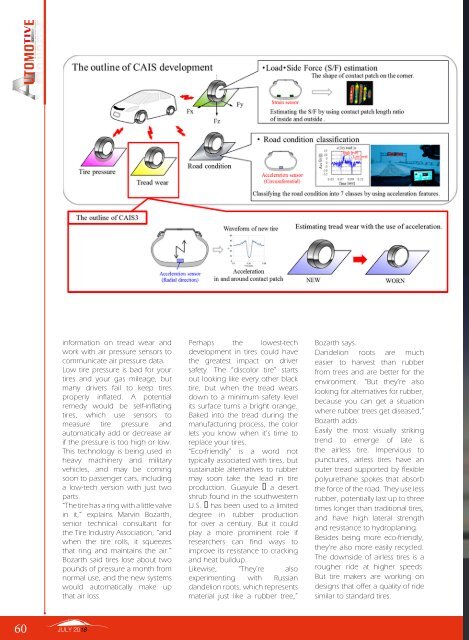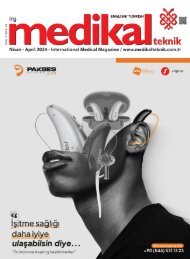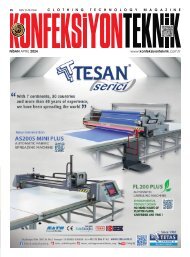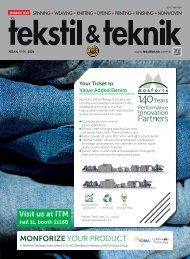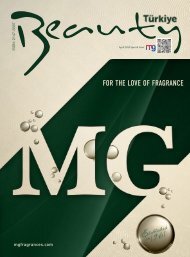Automotive Exports July 2018
Automotive Exports July 2018
Automotive Exports July 2018
Create successful ePaper yourself
Turn your PDF publications into a flip-book with our unique Google optimized e-Paper software.
Monthly automotive aftermarket magazine<br />
information on tread wear and<br />
work with air pressure sensors to<br />
communicate air pressure data.<br />
Low tire pressure is bad for your<br />
tires and your gas mileage, but<br />
many drivers fail to keep tires<br />
properly inflated. A potential<br />
remedy would be self-inflating<br />
tires, which use sensors to<br />
measure tire pressure and<br />
automatically add or decrease air<br />
if the pressure is too high or low.<br />
This technology is being used in<br />
heavy machinery and military<br />
vehicles, and may be coming<br />
soon to passenger cars, including<br />
a low-tech version with just two<br />
parts.<br />
“The tire has a ring with a little valve<br />
in it,” explains Marvin Bozarth,<br />
senior technical consultant for<br />
the Tire Industry Association, “and<br />
when the tire rolls, it squeezes<br />
that ring and maintains the air.”<br />
Bozarth said tires lose about two<br />
pounds of pressure a month from<br />
normal use, and the new systems<br />
would automatically make up<br />
that air loss.<br />
Perhaps the lowest-tech<br />
development in tires could have<br />
the greatest impact on driver<br />
safety. The “discolor tire” starts<br />
out looking like every other black<br />
tire, but when the tread wears<br />
down to a minimum safety level<br />
its surface turns a bright orange.<br />
Baked into the tread during the<br />
manufacturing process, the color<br />
lets you know when it’s time to<br />
replace your tires.<br />
“Eco-friendly” is a word not<br />
typically associated with tires, but<br />
sustainable alternatives to rubber<br />
may soon take the lead in tire<br />
production. Guayule ─ a desert<br />
shrub found in the southwestern<br />
U.S. ─ has been used to a limited<br />
degree in rubber production<br />
for over a century. But it could<br />
play a more prominent role if<br />
researchers can find ways to<br />
improve its resistance to cracking<br />
and heat buildup.<br />
Likewise, “They’re also<br />
experimenting with Russian<br />
dandelion roots, which represents<br />
material just like a rubber tree,”<br />
Bozarth says.<br />
Dandelion roots are much<br />
easier to harvest than rubber<br />
from trees and are better for the<br />
environment. “But they’re also<br />
looking for alternatives for rubber,<br />
because you can get a situation<br />
where rubber trees get diseased,”<br />
Bozarth adds.<br />
Easily the most visually striking<br />
trend to emerge of late is<br />
the airless tire. Impervious to<br />
punctures, airless tires have an<br />
outer tread supported by flexible<br />
polyurethane spokes that absorb<br />
the force of the road. They use less<br />
rubber, potentially last up to three<br />
times longer than traditional tires,<br />
and have high lateral strength<br />
and resistance to hydroplaning.<br />
Besides being more eco-friendly,<br />
they’re also more easily recycled.<br />
The downside of airless tires is a<br />
rougher ride at higher speeds.<br />
But tire makers are working on<br />
designs that offer a quality of ride<br />
similar to standard tires.<br />
60 JULY <strong>2018</strong>


